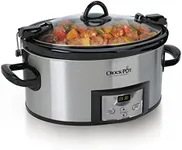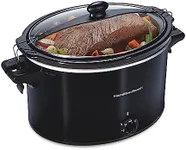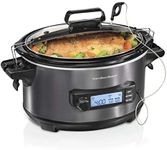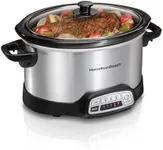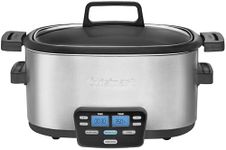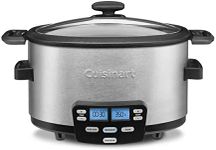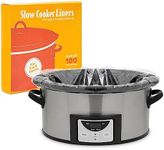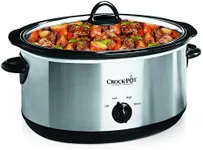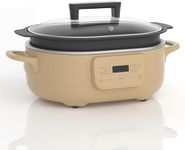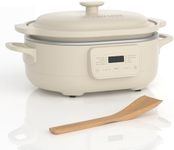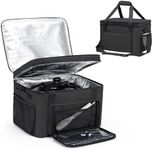Buying Guide for the Best Lightweight Slow Cooker
Choosing the right lightweight slow cooker can make a big difference in your cooking experience. Slow cookers are great for preparing meals with minimal effort, and a lightweight model adds the benefit of easy handling and portability. When selecting a slow cooker, consider the following key specifications to ensure you get the best fit for your needs.CapacityCapacity refers to the volume of food the slow cooker can hold, usually measured in quarts or liters. This is important because it determines how much food you can cook at once. Slow cookers typically range from 1.5 to 8 quarts. For singles or couples, a 1.5 to 3-quart cooker is usually sufficient. For families of four or more, a 4 to 6-quart cooker is ideal. If you often entertain guests or cook in large batches, consider a 6 to 8-quart model. Choose a capacity that matches your typical cooking needs to avoid under or overfilling the cooker.
WeightWeight is a crucial factor for a lightweight slow cooker, as it affects portability and ease of use. Lightweight models are generally easier to move around, store, and clean. Slow cookers can weigh anywhere from a few pounds to over 15 pounds. If you plan to transport your slow cooker frequently, look for models that weigh under 10 pounds. For those who will keep the cooker in one place, weight may be less of a concern. Consider your physical strength and how often you'll need to move the cooker when deciding on the right weight for you.
MaterialThe material of the slow cooker affects its weight, durability, and heat distribution. Common materials include ceramic, metal, and non-stick coatings. Ceramic inserts are popular for their even heat distribution and durability but can be heavier. Metal inserts, such as aluminum, are lighter and heat up quickly but may not retain heat as well. Non-stick coatings make cleaning easier but can wear out over time. If you prioritize a lightweight model, metal or non-stick options may be best. For those who value even cooking and durability, ceramic is a good choice.
Temperature SettingsTemperature settings control how hot the slow cooker gets and how long it cooks your food. Most slow cookers have at least three settings: low, high, and warm. Some advanced models offer more precise temperature controls and programmable timers. Low settings are ideal for slow-cooking tough cuts of meat and developing deep flavors over several hours. High settings are useful for quicker cooking times. The warm setting keeps food at a safe temperature for serving. Consider your cooking habits and the types of recipes you plan to make when choosing a model with the appropriate temperature settings.
ShapeThe shape of the slow cooker can affect how well it fits in your kitchen and how it cooks certain foods. Slow cookers come in round and oval shapes. Round cookers are great for soups, stews, and smaller cuts of meat. Oval cookers provide more surface area, making them better for larger cuts of meat, whole chickens, and casseroles. If you frequently cook large roasts or whole poultry, an oval shape is more practical. For general use and smaller meals, a round cooker may be sufficient. Choose a shape that aligns with the types of dishes you prepare most often.
Lid TypeThe lid type can influence the cooking process and ease of use. Slow cookers typically have glass or plastic lids. Glass lids allow you to monitor the cooking process without lifting the lid, which helps maintain a consistent temperature. Plastic lids are lighter and less prone to breaking but may not provide as clear a view. Some lids come with locking mechanisms for secure transport. If you value the ability to check on your food without disrupting the cooking, a glass lid is preferable. For those who prioritize portability, a plastic lid with a locking feature may be more suitable.
